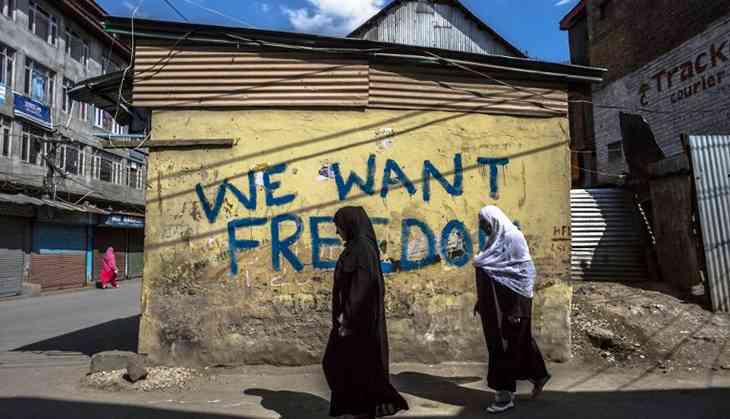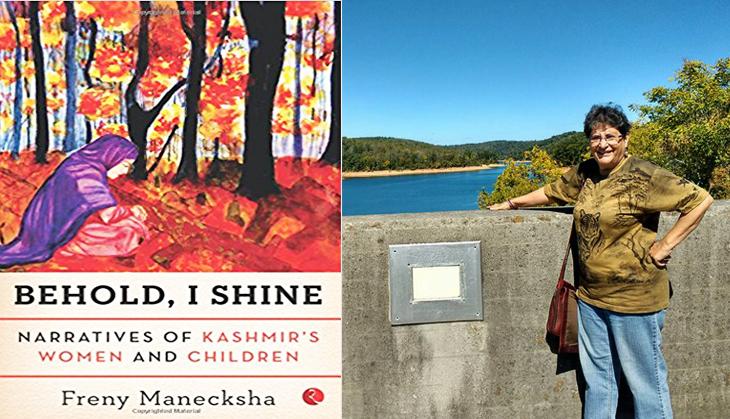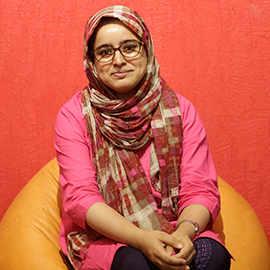Behold, I Shine: Stories of women and children in conflict-torn Kashmir

Freny Manecksha's Behold, I shine narrates the stages of suffering, day-to-day trauma, resilience displayed by women in strife-ridden Kashmir. It showcases the contribution of women to the Kashmiri resistance, defying state oppression to remain on the frontlines of a bloody, decades-long struggle. Through her book, Manecksha tells the stories of Kashmiri women; women who clearly have a lot to say, but often no avenue to share their thoughts.
Each chapter in the book narrates different stories, with all of them connected by the common thread of the ongoing crisis in the region. Speaking to Catch, Manecksha talks about the stories in Behold, her experiences with the people of Kashmir, and about the ongoing unrest in the Valley.
Sehar Qazi (SQ): Tell us about this book. How did you get the idea for it, and what do you want to say and achieve withit?
Freny Manecksha (FM): Among my writings on Kashmir, there were two or three articles with the gender perspective. So when I was approached by Rupa Publications to do a book, I was very happy to offer up narratives on women. It was at the suggestion of the editor that the subject was expanded to include childhood – a very sensitive and vital aspect.
Actually, when I had first done a piece in Himal on the effects of militarisation and conflict on women, one of the Kashmiri readers' comments was that women had, for too long, been "unseen and unheard." When I mentioned this to Anjum Zamrud Habib, a prominent resistance leader, she pointed out that women had certainly not been "unseen" in the protests of the nineties, but that they hadn't been given the political space they deserved.
So I thought in this book I would try to include as many voices/opinions, insights that women of Kashmir offered, keeping in mind that the personas were so varied and diverse – something that mainstream national media tends to obliterate.
SQ: You have been to Kashmir often. What do you think about the people of Kashmir and the ongoing uprising in Kashmir?
FM: I have been visiting Kashmir since 2010, and it continues to be a massive learning curve. When I was writing the book, the editor insisted I include a long chapter on the history of conflict and why it is a contested land. She helped cross-reference it extensively. I realize now its importance. In our minds, as a nation, we are amnesiac about this very complex and crucial history of Kashmir's people, their aspirations, and struggles. History is consistently being erased which is why we have such a different and often warped, perception on the uprisings.
We see what we want to see. So at one level, there is this Bollywood vision perpetuated by tourism. It's Chashma Shahi photo op, Gulmarg for the gondola ride, Sonamarg outing, and we say "Kashmir is a paradise, only 5% of the people are dissenting."
And then suddenly the pendulum swings the other way. When the protests erupt – 2008, 2009, 2010 or 2016 and 2017 – Kashmir may be a paradise, but its people are demonised. They are seen as paid or then wanton stone pelters, "terrorists" and so on.
As a journalist, I found that trying to really, really listen to what the people wanted when the cry of "Hum kya chahte..." went out, was a very interesting exploration. I began to understand some of the layered complexities of this land and how maslah-e-Kashmir is about the incomplete realisation of the people's political rights and aspirations.
Also the warmth I received and the mehman navazi compelled me to visit again and again.

SQ: How long did it take you to finish this book, and how did you select the title for it?
FM: Writing the book took about three years, but that is because there was the flood in 2014. I had to abandon my field work and couldn't return for the next six months.
The title, Behold, I Shine, comes from a line in the poem "Lol of The Lonely Pine" by the noted sixteenth century Kashmiri poetess Habba Khatoon.
I was very emphatic that I did not want a kind of "victimhood" title. I wanted the spirit of resistance, and even joy, of the Kashmiri women to shine through. But I could just not think up an appropriate one. Then editor Dharini Bhaskar came up with this line from the poem and it was a real "gift."
Rollie Mukherjee, a noted artist from Vadodara, who does illustrations on Kashmir, generously allowed us to use any of her paintings. And designer Mugdha Sadhwani chose one that seemed almost made with the title in mind, and put it together so beautifully. It really reflects everything I want to say about Kashmir and the women.
SQ: How many victims did you meet for the book, and what was their reaction?
FM: I hesitate to use the word 'victims.' These are women who may have suffered, but who turned their suffering into resilience or resistance, and a fight for justice. I found most women were very generous in sharing their stories or then providing me with insights. Many were extremely articulate, and those who could not speak out much shared through gestures (one sexual assault survivor slipped the pheran off her shoulder to indicate she had been disrobed and raped).
This generous reaction is probably because of the trust and confidence they had in the men and women who introduced me to them, so I am doubly beholden. Firstly, to the women who gave me their stories, and, secondly, to those who had impressed upon them the political necessity of speaking out.
SQ: Tell us about the chapter "WHO KILLED MY SON".
FM: This is a chapter on women whose lives were turned upside down because of conflict and continued occupation. The rhetorical question, "Who killed my son?", comes from the narrative of a woman who lost all three sons. Her husband was a government employee, he had even been honoured for helping to put out a fire in the Kashmir assembly when it was set ablaze, and yet the status quo of a violent occupation, or what has aptly been called "not war not peace", engulfed their lives.
SQ: Did you have to struggle to get this book published? How did you approach the publishers?
FM: I have already explained that Rupa Publications approached me for the book based on my writings and one of my essays in an anthology, Of Occupation and Resistance. I am very grateful to the publishers because writing this book set me on a very rich and eventful journey.


